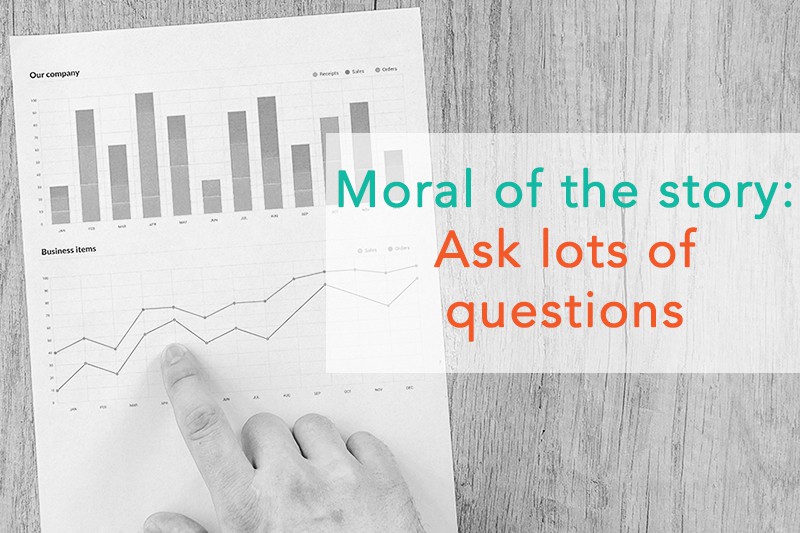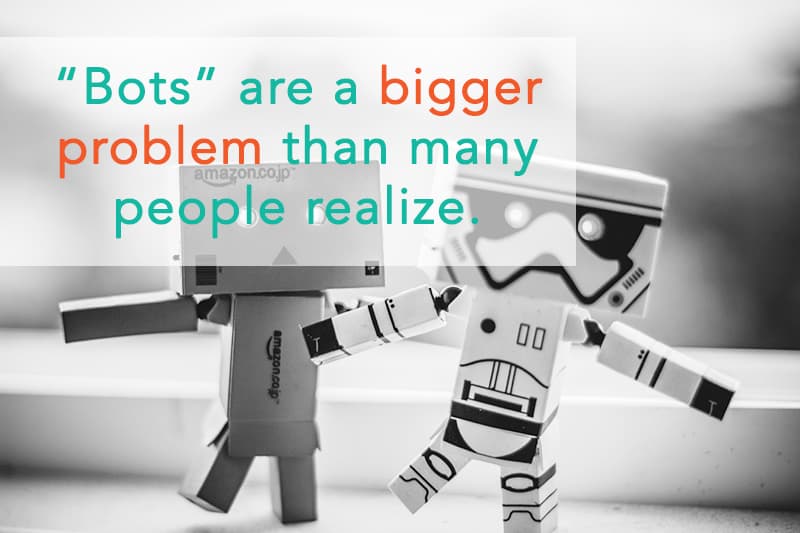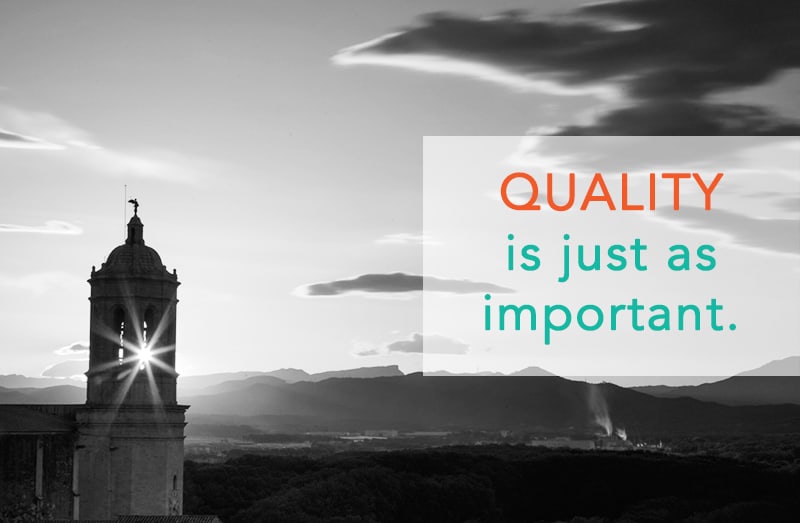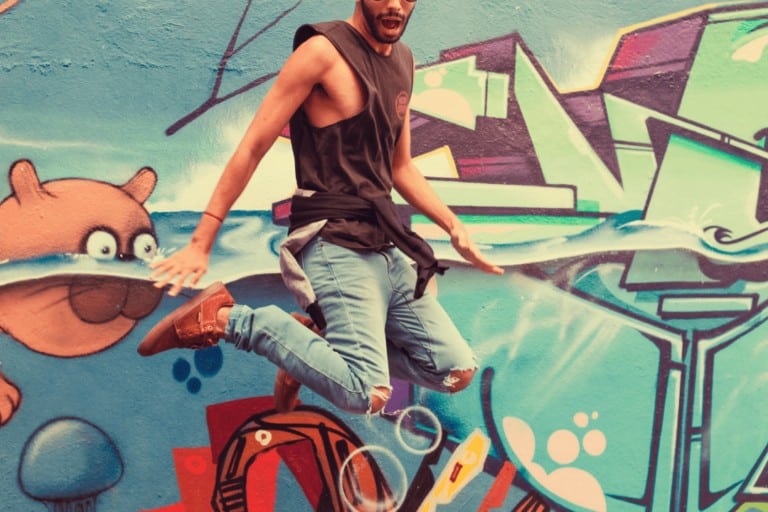How to Vet Influencers and Make Sure Your Money is Well Spent
By Dalene Heck and Tawny Bertolozzi
Recently, we discovered an influencer who looked great on paper. He had a following of over 300k on Instagram with high quality images and nice feed aesthetic, so we reached out to see if he would be interested in being part of a specific influencer campaign. His manager replied with rates that are quite high compared to the industry standard so we knew immediately that if there is even a chance of working together we would have to dig deeper into his metrics and followers to test if the value was really there.
A Closer Look
Two things immediately struck us about his Instagram account:
- He had a steady growth of over 100,000 followers per year, which is impressive, but unusual compared to so many others we have reviewed in the past. It very likely indicates that while he probably did not buy followers, he could very well be in an Instagram engagement group (or as is commonly called, a “pod”).Engagement pods are group conversations surrounding social media platforms where each member of the group agrees like and/or comment on other members’ posts in exchange for their own posts getting liked and/or commented. The purpose of participating in engagement groups is to get your post into the Top Posts section and gain organic growth from there.
- Something else concerning was that the influencer did not have an Instagram business account. This is important because business accounts provide deeper insights and demographics than a normal account. The standard vanity metrics that regular accounts can pull would not be enough – we would need to demonstrate to our clients that he has followers in the areas in which they wish to gain exposure. Without a business account, we would also have no idea of conversion rates or click throughs on Instagram Stories or other posts.
We queried the influencer’s manager about the above, and asked directly if he participated in engagement exchange groups or automated programs, or if he could point us to specific media coverage or other exposure that might account for the remarkable growth we had seen. And finally, we asked for case studies and results of previous campaigns. Insights into all these issues would go a long way towards helping our clients understand Instagrammer price points.
Ultimately, we were not satisfied with answers to any of the above. We decided to pass on working with this influencer in the future.
Inauthentic Influencers are a Growing Problem
We are obviously big proponents of influencer marketing. We help facilitate these partnerships every day and have realized lucrative outcomes for our clients. But, like any good thing, there are always people trying to work the system. It is frustrating to find so many influencers who falsely claim to have an engaged audience while charging a small fortunte in the name of exposure.
Our goal is to empower brands with proper knowledge about some of these shady practices and to help them find the right questions to ask of potential influencers.
How Influencers Cheat the System
One of the most common cases of inauthenticity is buying followers. This practice began back when Facebook Pages were first rolled out. For $5 you could buy 1,000 likes from a country on the other side of the world, and this strategy to inflate accounts is prevalent on all platforms now. These days you can buy “bot” accounts to follow, like, and comment on your content. (In fact, it was recently uncovered that on Twitter up to 48 million users – or 15% of all users on the platform – are bots.)
To root this out, we start with Social Blade. This tool gives a behind-the-scenes look at an account’s follower count per platform. An authentic account would likely present a smooth linear follower progression. Sudden spikes in followers give concern, and this is where pointed questions should be asked of the influencer about what the sudden spike could be attributed to. (While we like to give the benefit of the doubt before jumping to the bot conclusion – there are legitimate reasons for sudden spikes like mass media exposure – but more often then not it is an inorganic gain).
Note that as of very recently, Instagram has cut off all developers from access to their API. What this means is that some bot functions will no longer work (yay!), but also that very valuable services like Social Blade are no longer able to accumulate new data on accounts. Does this mean that there is no longer the need to vet influencer numbers? No, for three reason: (1) You can bet that accounts who are eager to go around the system will just find another way (2) Bots are still able to be purchased – hopefully that is the next thing Instagram tackles, and (3) It doesn’t change the fact that influencers may have used shady tactics up until now. Historic data on Social Blade will still show this.
Now that influencer marketing has been around for a sufficient amount of time, we can pinpoint the two biggest qualitative measurements to look at when evaluating an influencer: reach and expertise. It used to be that follower count equated to reach, but now with multiple algorithm changes and the prevalence of buying likes and followers, this is far from true anymore. Now, engagement is the golden ticket and of course this is being exploited as well. Elaborate pods are working around the system (with similar rules to Fight Club – nobody talks about them), where their main purpose is to like and comment on all member posts thereby boosting engagement. However, there is much dispute over their effectiveness, and we have one question that perplexes us daily: Why not instead focus that time wasted in pods on creating more quality content?
You know what though, we get it. Creating an authentic following on all social media platforms is very time consuming and exhausting. Some accounts have even turned to full automation to help with their online relationship building. No longer do you have to scour hashtags commenting on all the top posts, like posts by people you follow, or even click the follow button for yourself. This automation sounds great in theory (but tests reveal otherwise), especially when you leave an awkward comment like “I’d love to go there!” on a picture of someone’s cat who just died. (Also, expect the newest Instagram changes to affect this form of automation as well, if they haven’t already.)
How to Vet Influencers: Protect Yourself By Asking the Right Questions
So how can you avoid working with influencers that partake in shady practices? The answer is simple: you need to properly vet them. Ask for statistics, read through their feeds, look at their engagement, and ask questions if things don’t seem right. Authentic influencers who have built their following from the ground up have nothing to hide and will almost always be very forthcoming with this information.
If they are not forthcoming with their statistics, ask yourself if it is worth the risk working with them. Can their deliverables speak for themselves? Only you and your brand can make that decision to move forward if they are not willing to fork up the insights. As a standard practice, we do not move forward with influencers who do not give us the information we ask for as that is a giant red flag. We will not risk our client’s money on something that is not measurable.
Over the years, we have built an intensive reporting database from influencers that we have worked with. We know when numbers don’t make sense right away because we have comparative data. The below are just some of the data points we routinely ask for by platform.
For blogs: GOOGLE ANALYTICS
Google Analytics is the industry standard for website statistics. Start with asking for these five pieces of information from bloggers:
- Monthly average “users” to the blog (over three months).
- Monthly average “pageviews” to the blog (over three months).
- Average “pageviews” of the last five blog posts that are each over a month old. This will give an indication of the engaged readership of a blog by how many read it shortly after it is published.
- The top five countries of where the blog readers come from, to ensure that their audience is aligned with your desired demographic.
- The blog’s “bounce rate”. It is not uncommon for this to be upwards of 80%, anything lower is excellent and indicates that readers are sticking around and viewing more of the website. Beware if it is too low (like, in single digits), as that is indicative of an error in installing Google Analytics code on the website which results in at least double-counting of pageviews.
Consider asking for screenshots of any of the above, to ensure that the numbers the influencer are sharing with you are representative of the actual blog activity. (The same goes for any of the data requested below.)
Facebook reigns supreme as far as social media platforms go. With 2.07 billions users and counting, no other even comes close. It also provides the best analytical data of any medium out there, which is why, if this is a strength of the influencer you are considering you should dig a bit deeper here than on other platforms. Ask for:
- The top five countries of where their fans are from.
- Current “reach” for the past week.
- Current “post engagements” for the past week.
- The main demographics of their Facebook fans (age, gender, etc.).
Note that some of these numbers (reach and engagement) will provide little insight on their own, but when compared against others, or viewed over time, then some measure of page strength can be made. The same can be said about many of the numbers collected in the points following.
Instagram is currently the hottest platform out there and boasts over 800 million monthly active users. Instagram is touted as the platform which provides the best engagement overall, however it is also one that is famous for manipulation (although hopefully that is changing). So, besides doing our own homework on Social Blade, we also do this:
- Calculate average engagement rate by dividing the engagements (likes and comments) across all posts by follower count and multiply by 100, which will give you a percentage. Ideally you want to see 3% and above, although note that this naturally declines as accounts grow bigger.
- Look at the account’s followers for suspicious accounts such as “BuyFollowers437” and “TagForLikes633”, or accounts with large numbers of followers but no posts or profile photo. One, or two is common, but 10, 20, or 100s of these in a row are not and may be indicative of a fake follower service that the influencer bought into.
- Ask for average Instagram Story views on their last 3 complete days./li>
- Ask for average Instagram Live views on their last 3 live sessions.
- Ask for the top five countries of where their followers are from.
- Ask for the main demographics of their followers (age, gender).
We run an influencer’s Twitter handle through Fake Follower Check and Social Blade first to see see the behind-the-scenes of the account. Then we also ask for:
- Their total “tweet impressions” over the last month.
- “Mentions” over the past month.
- Engagement rates if they have them, although note that they can only be determined by a manual calculation.
YOUTUBE
With 1 Billion active users each month, the latest data has shown that collaborations with YouTube creators are 4x more effective at driving lift in brand familiarity than those with celebrities. YouTube influencers are in high-demand and quality ones can be hard to find. Like the other platforms, do your own research of subscribers and basic engagement first and then if they are a candidate for your brand, proceed to ask for:
- Top five countries of viewership.
- Average view duration (in minutes).
- Total overall views.
Although Remember: It’s Not All About the Numbers
One of the biggest factors for us when researching a new influencer is doing a general sweep of their content on all platforms and asking more important questions: Does their voice align with the brand? Is their website easy to navigate? Do they actively respond to comments or questions on social media? There are many things to consider. This requires reading a few months worth of blogs, scrolling their Instagram feed to see the aesthetic, seeing what other brands they collaborate with, and looking up blog or social account age. Having a legitimate online following is hard work and the ones who have been in the game for years know this. (We tend to avoid partnering our clients with influencers who haven’t been posting consistently for at least two years.)
New influencers are popping up daily and wading through the masses to find the right one for your brand can be intimidating and confusing. We hope that by calling out some shady practices and outlining exactly what to ask for in terms of statistics, you will have a better understanding on how to properly vet an influencer and make sure your marketing dollars are wisely spent.
For an even more thorough look into vetting influencers (including a deep-dive into qualitative aspects that I have only briefly touched on above), I highly recommend downloading our free ebook How To Work With Travel Influencers. Have further questions? Contact us!
You may also want to read:
8 Reasons To Work With Influencers











